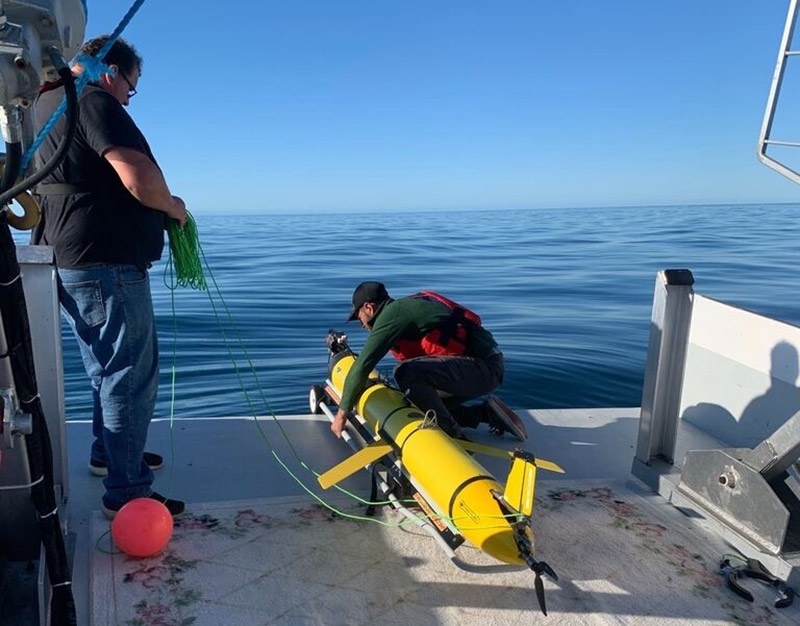Right whale glider project successfully completes first season of detection
Author: UNB Newsroom
Posted on Nov 19, 2020
Category: UNB Saint John

A collaboration between the University of New Brunswick and Transport Canada to detect North Atlantic right whales using an underwater acoustic glider has been hailed a success in its first year.
The initiative, led by Dr. Kimberley Davies from the UNB Saint John campus, used an autonomous underwater glider equipped with a digital acoustic monitoring device to detect several species of large whales in the Laurentian Channel shipping lanes, between Anticosti Island and Cape Breton Island, in the Gulf of St. Lawrence.
During the two-month deployment, the glider detected right whales on nine separate days – including one within the first 24 hours of operation. As a result, slowdowns were triggered in that area.
"To our knowledge this is the first time that gliders have been used to mitigate large-whale ship strike risk anywhere in the world. It represents a significant step forward in industry-conservation coexistence,” says Dr. Davies.
Transport Canada has been testing different detection methods over the past few years, but this is the first year an underwater glider and aerial drone were added to the arsenal of real-time mitigation tools.
Over the past few years, the endangered right whale population has seen a decline, in part due to ship strikes. Dr. Davies led a 2019 study of underwater gliders and fixed moorings to detect right whales in the Honguedo Strait to support ship strike mitigation efforts. Based on those results, Transport Canada chose to incorporate gliders into its operational dynamic shipping management and, following this year’s positive results, plans to use them again.
Photo: Ocean Tracking Network technician Alex Cerra preparing to launch an underwater glider, which was used detect right whales in the Gulf of St. Lawrence during the summer. Credit: Ocean Tracking Network.
